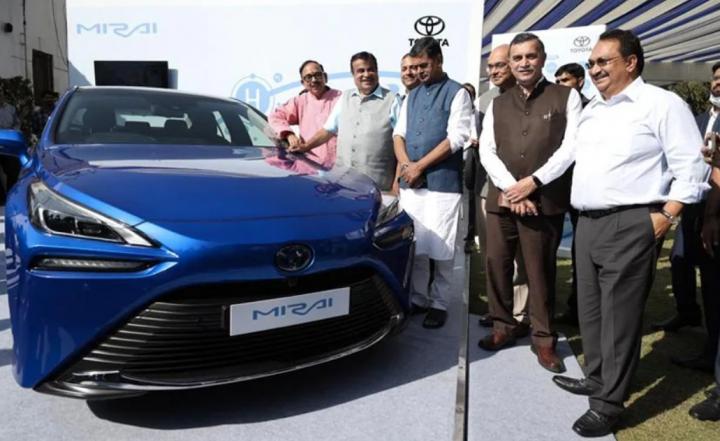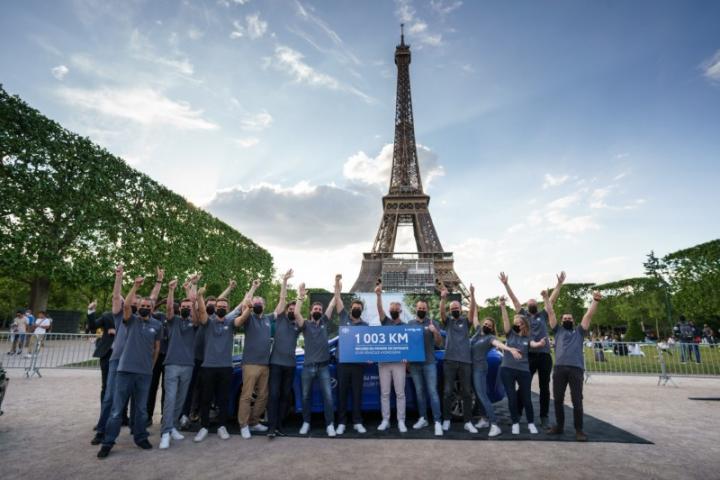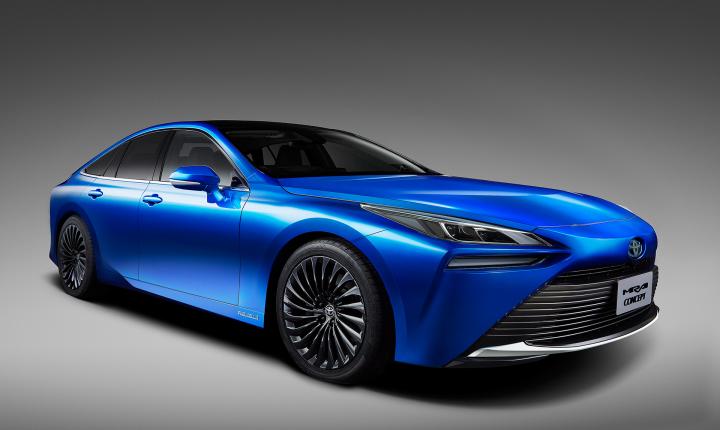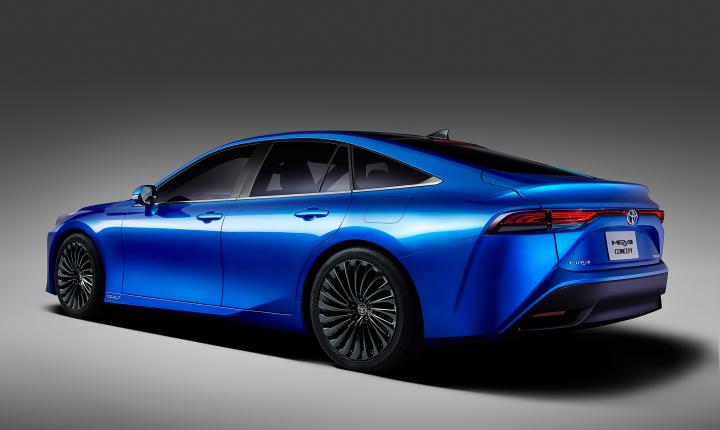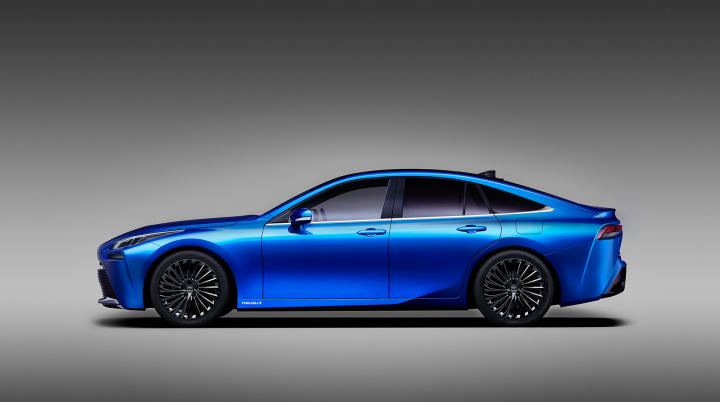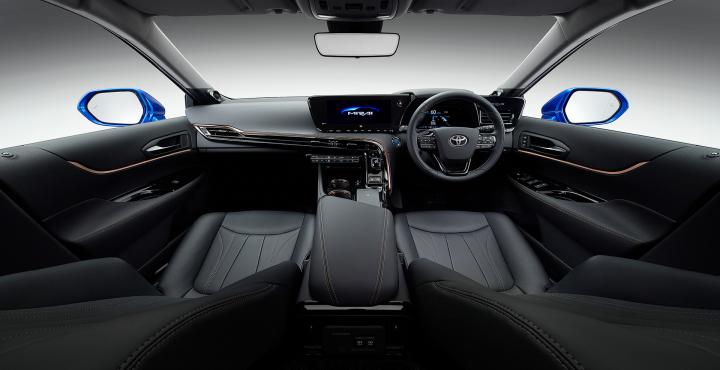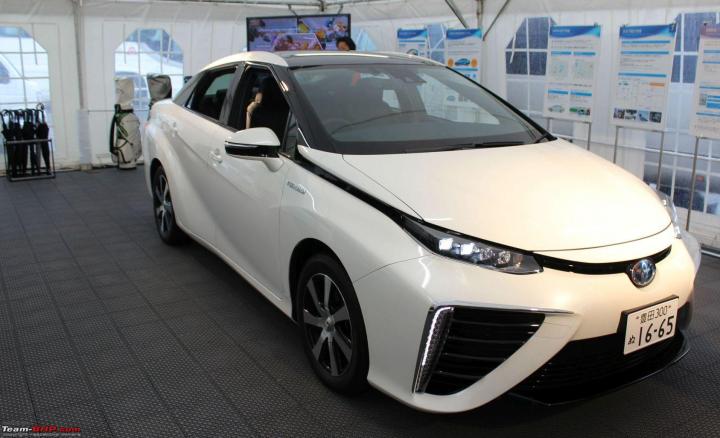News
Toyota Mirai Hydrogen fuel cell EV pilot study begins in India
A fuel cell that combines hydrogen and oxygen to produce electricity and the only tailpipe emission is water.
Nitin Gadkari, Minister for Road Transport & Highways, has launched a pilot study on the Toyota Mirai Hydrogen Fuel Cell Electric Vehicle (FCEV) in India.
Toyota Kirloskar Motor will be conducting the study in collaboration with the International Centre for Automotive Technology (ICAT). The aim is to evaluate the feasibility of the hydrogen-powered Mirai on Indian roads and climatic conditions.
The Mirai is powered by a fuel cell that combines hydrogen and oxygen to produce electricity. The only tailpipe emission from a hydrogen FCEV is water.
According to Gadkari, green hydrogen can be generated from renewable energy and biomass. This technology is said to have the potential to secure a clean and affordable energy future for India.
- Tags:
- Indian
- Mirai
- FCEV
- Hydrogen Fuel Cell
- Morth
News
Toyota Mirai hydrogen FCEV sets new Guinness world record
The Toyota Mirai logged an impressive fuel efficiency figure of 152 MPGe.
The Toyota Mirai recently set the Guinness World Record for the longest distance travelled by a hydrogen fuel cell EV.
The Toyota Mirai managed to clock 1,360 km (845 miles) on a single tank of hydrogen. The world record attempt took two days to complete and took place in Southern California, USA. The FCEV was driven by professional hypermiler Wayne Gerdes with Bob Winger as his co-pilot.
The duo covered 761 km on the first day, starting from the Toyota Technical Centre (TTC), California, going all the way to Santa Barbara via San Ysidro. The car also visited places like Santa Monica and Malibu beach before returning to the TTC at the end of the day.
Day 2, the Mirai covered 600 km in the morning and afternoon traffic of San Diego, Los Angeles and Orange County, before coasting back to the TTC with the remaining hydrogen.
Combining the results of both days, the Toyota Mirai clocked 845 miles in total from 5.45 kg of hydrogen, translating an impressive fuel efficiency of 152 MPGe. The Toyota Mirai also did not stop for any refuelling for the record attempt.
- Tags:
- Indian
- Mirai
- world record
News
Toyota Mirai FCEV breaks world record with 1000 km drive
Toyota Mirai breaks the world record after travelling 1003 km on a single tank of hydrogen.
Toyota has announced that its hydrogen-powered Mirai has broken a world record - the longest distance driven on a single tank of hydrogen. The Mirai FCEV covered a total of 1,003 km on a single tank of hydrogen.
The world record attempt started on May 26, 2021, at 5:43 am from the HYSETCO hydrogen station in Orly, France. The Mirai was driven on public roads, south of Paris and in the areas of Loir-et-Cher and Indre-et-Loire.
The total distance covered and the consumption levels were certified by an individual authority. As per the official figures, the Toyota Mirai recorded a distance of 1,003 km with an average hydrogen consumption of 0.55 kg / 100 km. The Mirai FCEV comes with a capacity to store a maximum of 5.6 kg of hydrogen.
The car used for the record attempt was its second-generation Mirai, which in normal driving conditions, is claimed to offer a range of 650 km. To achieve the world record, the drivers used an 'eco-driving' style. However, no other special techniques were used.
News
Next-gen Toyota Mirai concept revealed
Toyota has revealed the second-generation Mirai fuel cell car ahead of its debut at the 2019 Tokyo Motor Show.
At the front, the new Mirai gets sweptback headlamps and a wide grille with horizontal slats. At the rear, the car has split tail lamps with a light bar running across the width of the car. The Mirai has a coupe-like sloping roof and it rides on 20-inch alloy wheels. It gets fuel cell badging on the running boards. The new Mirai is based on the TNGA platform and measures 4,975 mm in length, 1,885 mm in width and 1,470 mm in height with a wheelbase of 2,920 mm.
The Mirai comes with an all-black interior with copper inserts. It has a 3-spoke multifunction steering wheel, a digital instrument cluster, a 12.3-inch touchscreen head-unit, wireless charging and a gear level mounted on the centre fascia. While the first-generation Mirai could seat only 4 people, Toyota claims that the new car can seat 5.
The car is said to have a new fuel cell system with redesigned fuel cell stack. The carmaker claims that its performance has improved and its range has increased by 30% compared to the previous-generation car. The first-generation Mirai has an EPA-approved range of 502 km with a hydrogen tank capacity of 5 kg. Power is sent to the rear wheels.
The second-generation Mirai is expected to be launched in 2020 in Japan, North America and Europe.
News
Second-gen Toyota Mirai to be unveiled in 2020
According to a media report, the next-generation Toyota Mirai will be unveiled in 2020.
The report suggests that Toyota believes that the price of fuel cell cars will be the same as that of hybrids in around 10 years. The third generation of the Mirai could be comparable to hybrids.
The Mirai, which is Toyota's first fuel cell car, was launched in 2014. The car comes with a total hydrogen tank capacity of 5 kg and has an EPA-approved range of 502 km. The electric motor in the car produces 150 BHP and 335 Nm.
Toyota is also testing a fuel cell variant of the Lexus LS. The LS could become Toyota's second fuel cell vehicle.
Source: Automotive News
News
Toyota Mirai Hydrogen Fuel Cell car spotted in India
The Toyota Mirai - a hydrogen fuel cell powered car has been spotted in India for the first time. The car has reportedly reached the Bangalore Toyota centre.
The Toyota Mirai is a 4-door sedan. It has slim wraparound headlights and triangular vents with chrome trim. An LED light is positioned vertically on either side of the bumper. The Mirai has blacked-out A, B and C-pillars. At the rear, the car has triangular tail lamps with a light bar that stretches across the tail gate.
On the inside, the Mirai has a 3-spoke multi-function steering wheel and a digital instrument cluster placed in the centre of the dashboard. It has a floating touchscreen infotainment system and a raked centre console with a piano black fascia and silver trim.
The Mirai is powered by a fuel cell system that has 370 cells. It has a peak output of 151 BHP. The fuel cell system powers an electric motor that has an output of 149 BHP and 335 Nm of torque.
Source: Manoramaonline
News
Toyota offers its fuel cell vehicle patents royalty free
In a bid to increase the popularity of fuel cell vehicles (FCVs), Toyota will allow royalty-free use of approximately 5,680 FCV related patent licenses, including pending applications. Toyota announced this plan at the ongoing 2015 Consumer Electronics Show (CES) shortly after showcasing the Mirai FCV.
The initiative includes patents that involve development and production of FCVs, such as those relating to fuel cell stacks (approx. 1,970 patent licenses), high-pressure hydrogen tanks (approx. 290 patent licenses), and fuel cell system control technology (approx. 3,350 patent licenses). Given that the success of FCVs like the Mirai depend on a strong hydrogen station network, Toyota will also provide royalty-free use of approximately 70 hydrogen station related patent licenses indefinitely for those installing and operating hydrogen stations.
The Toyota Mirai goes on sale towards the end of 2015 in Europe and the USA.



